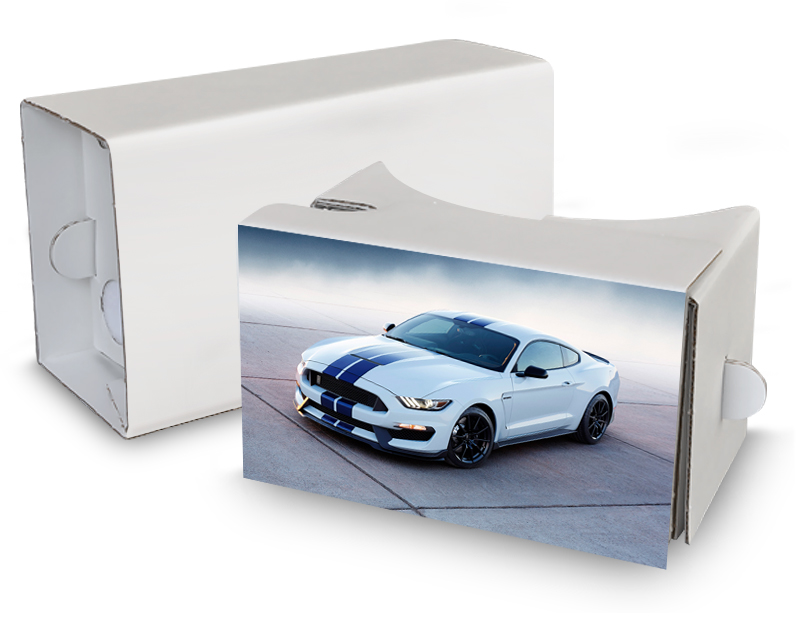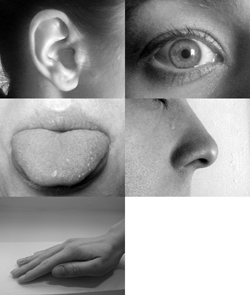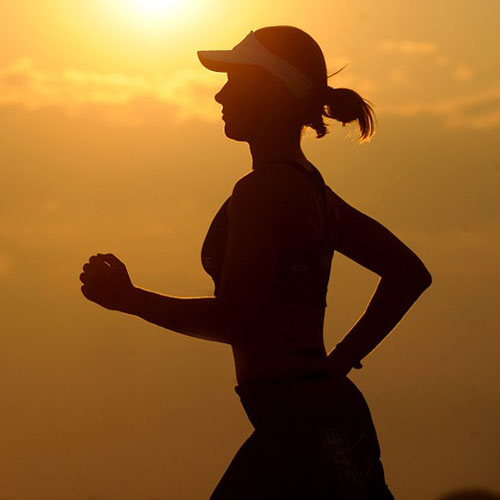
According to the 1987 movie “The Running Man,” starring Arnold Schwarzenegger, 2017 is the year the world goes into economic collapse, even though things aren’t all rosy in the current climate worldwide, they definitely aren’t as bad as this movie predicted! One thing 2017 will definitely be exciting for is seeing what technological trends and consumer markets have to offer us this year! Over the next 5 Episodes I aim to show you what I think will be big this year not only in the world of technology but how this will translate to to the Promotional Product Industry.
Earlier last month, the world’s biggest Consumer electronics and technology exhibitions took place in Las Vegas Nevada, CES 2017. It was so exciting to see the plethora of new technologies hitting the market this year, some of them relevant and ready to hit the market, others wacky futuristic concepts, but all have one thing in common, they are all pushing the technological boundaries showing us what could be the world of tomorrow. And what does consumer electronics and technologies being introduced into society have to do with the promotional product industry? I almost guarantee you if there is a popular product finding its way into the consumer market, it will just as quickly become a popular item in the promotional merchandise market also, nine times out of ten you can see a straight correlation between popular new products to buy and popular new products to brand. Over the next 5 Episodes I aim to show you what I think will be big this year not only in the world of technology but how this will translate to to the Promotional Product Industry.
 1) USB Type C
1) USB Type C
I know what you’re thinking, not another type of connector, but bear with me for one moment as theoretically USB Type C has the ability to be THE One and only Connector you’ll need (One Connecter to rule them all!…for now anyway!) The transformed shape is actually not too dissimilar from current USB connectors; it is just slightly thicker and wider than the popular micro-usb. Great news is for those of you, like me, who plug your phone in to charge in the dark, you will be happy to know, like the Apple lightening connecter, Type C can be plugged in front to back or back to front! The unique quality USB type C has is that it supports all different types of connections, from
charging, to data transfer, audio and even visual! This means that the USB type C can replace not only all of your current USB charging and transfer cables, but it will also replace Aux, HDMI, VGA and DVI cables.
 USB chargers can currently only handle 5 volts at 2 amps (generally) whereas to fully power a computer, the source would need to output at least 20 volts at 5 amps.. Coupled with USB 3.1 and type C connectors the power is now scalable up to 100 watts, providing enough power to charge computers, laptops, tablets, phones, cameras, home robots, spaceships ok maybe not a whole spaceship…. Possibly just the LED lighting… Although I joke about spaceships this integration process is not a distant future, flagship mobile devices have already started incorporating USB Type C ports and reaping the benefits of superfast data transfers and charging. Although USB type C and USB 3.1 are different things, you will generally see them combined to create this USB connected powerhouse, which will make smart devices smarter and your personal and portable computers more portable.
USB chargers can currently only handle 5 volts at 2 amps (generally) whereas to fully power a computer, the source would need to output at least 20 volts at 5 amps.. Coupled with USB 3.1 and type C connectors the power is now scalable up to 100 watts, providing enough power to charge computers, laptops, tablets, phones, cameras, home robots, spaceships ok maybe not a whole spaceship…. Possibly just the LED lighting… Although I joke about spaceships this integration process is not a distant future, flagship mobile devices have already started incorporating USB Type C ports and reaping the benefits of superfast data transfers and charging. Although USB type C and USB 3.1 are different things, you will generally see them combined to create this USB connected powerhouse, which will make smart devices smarter and your personal and portable computers more portable.
In the next episode we will see the new developments in virtual reality and what we think 360 video has to offer us this year.


 Before we enter the exciting world of drone use for commercial or leisure, it is very important to know and understand the safety and legal matters surrounding remotely piloted aircraft systems.
Before we enter the exciting world of drone use for commercial or leisure, it is very important to know and understand the safety and legal matters surrounding remotely piloted aircraft systems.





 But what use can these products have promotionally? The question has already been answered by several large companies that are already using Google Cardboard like products in several different ways. Last month on our website I posted a blog detailing what I thought would be the
But what use can these products have promotionally? The question has already been answered by several large companies that are already using Google Cardboard like products in several different ways. Last month on our website I posted a blog detailing what I thought would be the 
 As I mentioned before large companies have already started using these products promotionally in their own unique ways, a very current fantastic example is the New York Times, whose campaign created a milestone in VR history. Early last November
As I mentioned before large companies have already started using these products promotionally in their own unique ways, a very current fantastic example is the New York Times, whose campaign created a milestone in VR history. Early last November 

 The word haptic derives from the Greek word “haptikos” which translates to pertaining to the sense of touch. From a programming point of view touch is more than likely the most difficult to recreate in a virtual world, visual and audio are definitely less problematic to recreate hence the technological advancements in those areas. That’s not to say they haven’t tried, the research that has gone into tactile feedback technology is extremely vast, and we are finally reaching the point where we’re finally in touching distance (no pun intended.) Saying all this haptic technology isn’t actually a new concept, we have been using it in gaming and mobile devices for a while now, every time your phone vibrates or games controller rumbles we are receiving tactile feedback through haptic technology. To give you a glimpse into what the future holds for haptic technology we have to go back to 2009 where researchers from the
The word haptic derives from the Greek word “haptikos” which translates to pertaining to the sense of touch. From a programming point of view touch is more than likely the most difficult to recreate in a virtual world, visual and audio are definitely less problematic to recreate hence the technological advancements in those areas. That’s not to say they haven’t tried, the research that has gone into tactile feedback technology is extremely vast, and we are finally reaching the point where we’re finally in touching distance (no pun intended.) Saying all this haptic technology isn’t actually a new concept, we have been using it in gaming and mobile devices for a while now, every time your phone vibrates or games controller rumbles we are receiving tactile feedback through haptic technology. To give you a glimpse into what the future holds for haptic technology we have to go back to 2009 where researchers from the  It’s not just touch that is being researched; companies are also exploring the possibilities of taste and smell in virtual reality. In 2013 new scientist published an article describing how a team from the
It’s not just touch that is being researched; companies are also exploring the possibilities of taste and smell in virtual reality. In 2013 new scientist published an article describing how a team from the 

 The Oxford Dictionary describes virtual reality as:
The Oxford Dictionary describes virtual reality as:
 – The first type is simulation of real environments this can either be interactive, a real world environment that you can navigate around, used generally use for building and outdoor tours or training activities. Alternatively there are 360 degree videos, using a special set up which is generally a 360 degree video rig, as shown in the picture, people can film blogs, events or pretty much anything with their 360 video rig, capturing every angle whilst recording. With advancements in technology tech companies are now producing 360 degree cameras, which can perform the same 360 degree capturing from a single device.
– The first type is simulation of real environments this can either be interactive, a real world environment that you can navigate around, used generally use for building and outdoor tours or training activities. Alternatively there are 360 degree videos, using a special set up which is generally a 360 degree video rig, as shown in the picture, people can film blogs, events or pretty much anything with their 360 video rig, capturing every angle whilst recording. With advancements in technology tech companies are now producing 360 degree cameras, which can perform the same 360 degree capturing from a single device. – The second type is simulation through 3d computer rendering in this instance everything you see around you is computer generated, working in the same way as a first person video game would work. This style of virtual reality has been around for a while, and the technology to recreate such first person views has been around even longer, programmers would just have to adjust the viewing to left and right eye outputs, thus creating a user immersed computer environment.
– The second type is simulation through 3d computer rendering in this instance everything you see around you is computer generated, working in the same way as a first person video game would work. This style of virtual reality has been around for a while, and the technology to recreate such first person views has been around even longer, programmers would just have to adjust the viewing to left and right eye outputs, thus creating a user immersed computer environment.

 Experiential marketing is a type of promotion that is aimed to directly engage with the consumer, a strategy that invites the user to interact with the brand first hand, rather than passively receive their marketing messages. Now when I say Experiential Promo in this sense, I don’t mean that promotional merchandise could singlehandedly replace this type of marketing, what I mean is, there is definitely room to increase the usage of promotional merchandise during the use of experiential marketing. Now, this isn’t exactly a new concept, a great example of this previously in action was during the 2012 London Olympics. Throughout the summer of 2012
Experiential marketing is a type of promotion that is aimed to directly engage with the consumer, a strategy that invites the user to interact with the brand first hand, rather than passively receive their marketing messages. Now when I say Experiential Promo in this sense, I don’t mean that promotional merchandise could singlehandedly replace this type of marketing, what I mean is, there is definitely room to increase the usage of promotional merchandise during the use of experiential marketing. Now, this isn’t exactly a new concept, a great example of this previously in action was during the 2012 London Olympics. Throughout the summer of 2012  When I first started writing this blog, this was originally going to be a part of the experiential promo section, but after getting the feedback of how popular this concept was at recent promotional trade shows, I thought it deserved it’s very own dedicated shout-out on just how popular it will be this year. The reason I was going to put it in the previous section was it is a great concept to use this specific type of promotional product if a company was to create a brand experience around a virtual reality campaign. We have seen great examples of promotional products being used alongside virtual reality in recent years with the use of apps like
When I first started writing this blog, this was originally going to be a part of the experiential promo section, but after getting the feedback of how popular this concept was at recent promotional trade shows, I thought it deserved it’s very own dedicated shout-out on just how popular it will be this year. The reason I was going to put it in the previous section was it is a great concept to use this specific type of promotional product if a company was to create a brand experience around a virtual reality campaign. We have seen great examples of promotional products being used alongside virtual reality in recent years with the use of apps like